Thrive
St. Pete continues grappling with flooding, wastewater woes
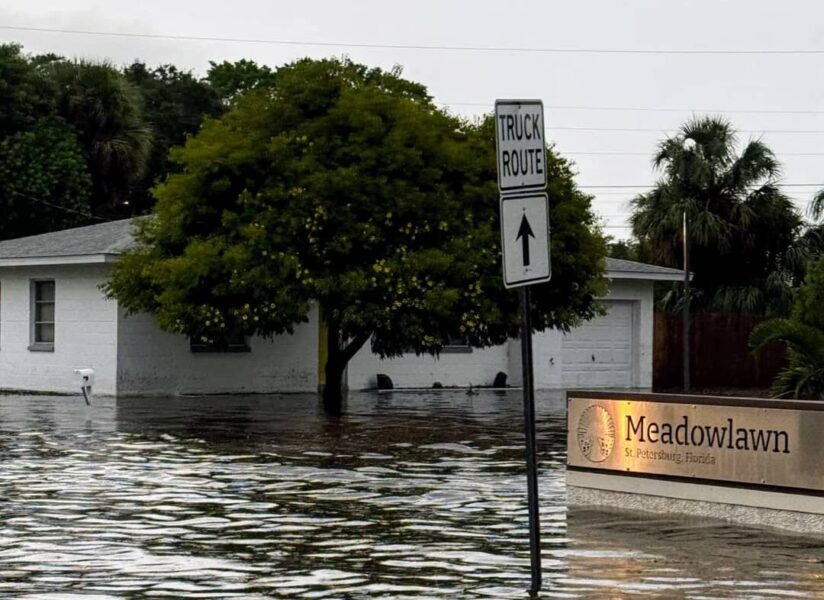
Residents across St. Petersburg implored city officials to help mitigate flooding impacts after torrential rains caused widespread inundation for a second consecutive night Wednesday.
First responders received nearly 200 emergency calls related to flooding Wednesday evening. West St. Pete received over 5″ inches of rain in an hour.
Claude Tankersley, public works administrator, said St. Petersburg’s water systems could withstand 7.5″ inches of rain in 24 hours. Despite scientists warning of increasingly intense storms, residents should not expect a capacity increase.
“We are not going to be designing our systems to handle four or five inches in an hour,” Tankersley said. “It would be in the billions of dollars. I just don’t think we’re prepared to commit ourselves to that kind of cost.”
Wastewater
City officials reported that Tuesday evening downpours caused manholes to discharge at least 3,000 gallons of untreated wastewater. Tankersley told the Catalyst Thursday afternoon that he suspected crews would find additional overflows.
He also expects the Florida Department of Environmental Protection (FDEP) to fine the city for those discharges. Tankersley did not mention wastewater woes at a subsequent city council meeting. Council members did not ask for an update.
However, officials did update the FDEP Thursday. The pollution notice now states that 10,450 gallons of untreated wastewater spilled into Joe’s Creek.
In addition, another 5,200 gallons leaked at the Northwest Water Reclamation Facility. Crews captured 200. The city has not notified area residents via social media or a dedicated website.
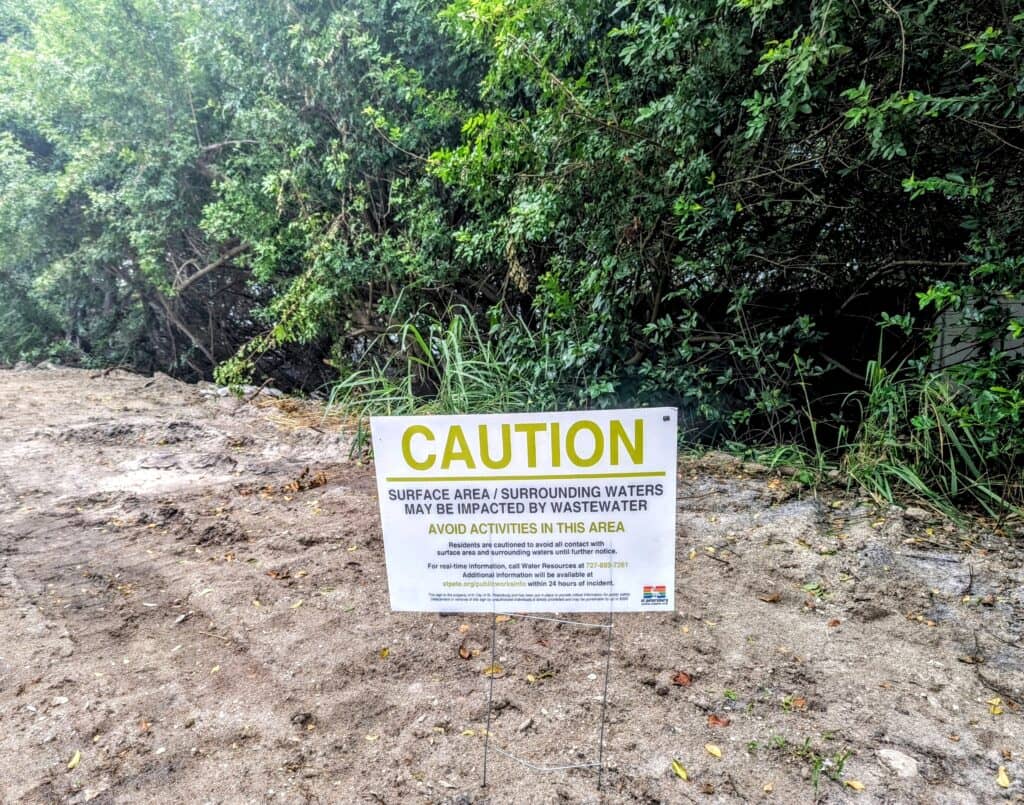
A sign warning residents of potential wastewater contamination after an August 2023 sewage spill in St. Petersburg. Photo by Mark Parker.
“Since 2016, we’ve spent hundreds of millions of dollars – close to a billion dollars’ worth – fixing our public pipes,” Tankersley said. “We believe the wastewater discharges associated with these storms come from … private laterals.”
Those pipes connect homes to St. Petersburg’s sewer system. Tankersley explained that torrential rains submerge the laterals in groundwater, which overwhelms the city’s system.
He said officials have a $1 million fund to help homeowners update their problematic pipes. Costs can range from roughly $3,000 for a cleaning to $15,000 for a replacement.
The city offers reimbursements of up to $8,000. County officials cap their program at $3,500.
Drainage
Tankersley said the city recently received over 500 requests to inspect stormwater drains and pipes. Crews inspect the often-outdated infrastructure “to the best of our ability” and find that roughly 75% are “free and clear.”
“Which, again, supports the idea that this is just the system being overwhelmed,” Tankersley said. “We have a Stormwater Master Plan with over a billion dollars’ worth of work identified in it to address these issues moving forward.”
However, he reiterated that officials designed those long-awaited projects to manage 7.5” inches of rain over 24 hours. Tankersley noted that roads could still experience minor flooding at those levels.
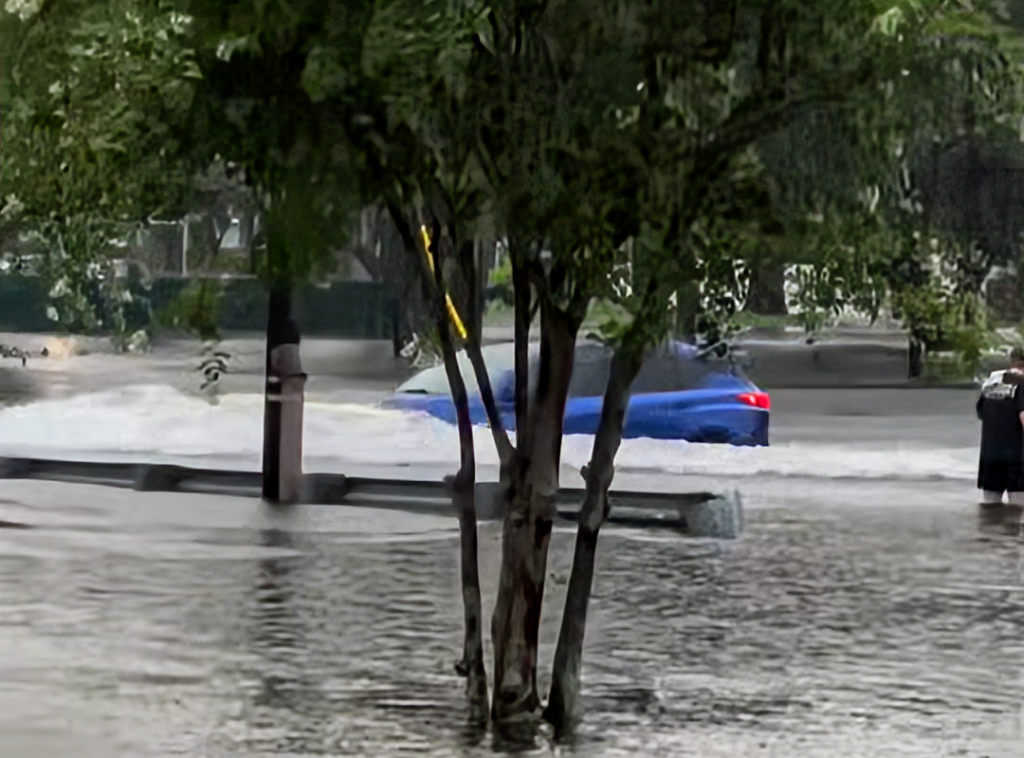
Motorists should never attempt to drive through flooded streets. Screengrab: St. Petersburg Police Department, Facebook.
The city reduces lake levels before tropical storms. At the subsequent meeting, Councilmember Copley Gerdes asked if draining those could mitigate inundation.
Tankersley explained that three lakes with pump stations – two in north St. Pete’s Riviera Bay neighborhood and Lake Maggiore on the city’s southside – can guide excess rainfall away from the Pinellas peninsula. He said draining interior lakes into the stormwater system would compound the problem “further downstream.”
Tankersley said he would explore the suggestion but lacked optimism for its efficacy. Gerdes notes some west St. Pete lakes flow to the Intracoastal Waterway, and could present “an opportunity to help.”
Growth
Residents have noted that low-lying areas are flooding more frequently, and homes that have historically remained dry through storms now experience water intrusion. Many blame an influx of new development – particularly high-rise luxury condominium towers.
Tankersley explained that since the 1980s, developers must obtain a Southwest Florida Water Management permit before commencing construction. Approval requires a plan to ensure pre- and post-development stormwater outflow rates align.
Projects typically feature a retention pond or regulated stormwater conveyance system. “Development since the 1980s should not, and I do not believe, is what’s causing the problem,” Tankersley said.

Officials do not believe rapid growth contributes to recent flooding. Photo by Mark Parker.
Elevation
Tankersley said homebuilders and residents could help mitigate impacts. He noted that “massive flooding events” have periodically occurred in the Sunshine City since its inception.
St. Petersburg experiences recent inundation levels about once a decade, Tankersley added. Early 20th-century residents prepared for that aspect of life on the peninsula.
Tankersly said most homes built between the 1920s and 1950s had a ground-level “crawl space” that allowed floodwater to pass underneath without damaging the structure or its contents. City officials see the most issues with modern houses built “flat on grade.”
“We should look at going back to the concept of building homes that are elevated,” Tankersley said. “They don’t have to be 18 feet tall, but … have that space beneath it.
“So, when we get normal Florida weather – because Florida is a rainy state – if we can’t handle it through our stormwater system, it can go underneath the building.”
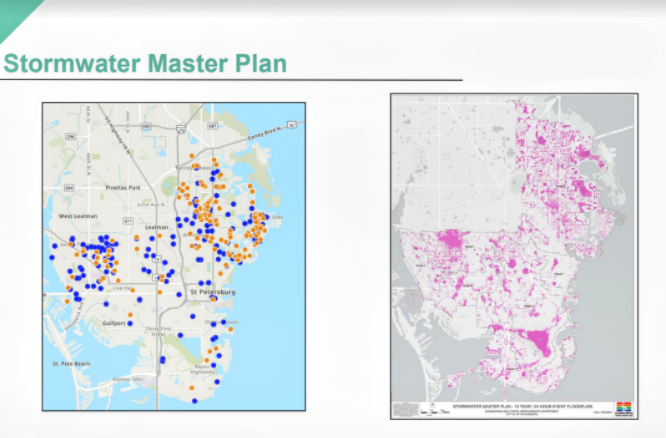
A graphic highlighting that recent stormwater system inspection requests align with projects identified in the recently completed Stormwater Master Plan. Screengrab.


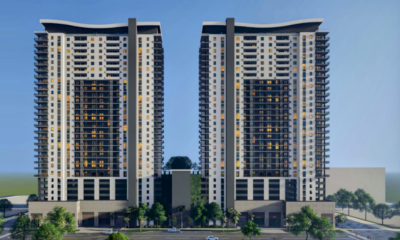





Jeanne
September 12, 2024at8:28 am
I have been seeing so many people complaining about the City, complaining that the sewers are clogged and not draining because of the new construction. That’s not how sewer drains work. The simple fact is, the drains are clogged because in today’s society we do not pick up after ourselves and then we blame others for our actions. I have not seen one person complain that the drains are clogged with grass clipping and leaves from their own yards. I see it everyday, landscapers and people carefully pruning their beautiful lawns and then blowing all the debris into the streets with leaf blowers. Mother Nature decides to dump an enormous amount of rain upon us in a very short time, and then we’re shocked that the drains are full and therefore it must be the City’s fault.
Peter Sabine
September 9, 2024at11:14 pm
Just think Joe;s creek will someday be the nicest place in the city with the new ball park till they flush the poo water from the rains will that excite folks
Steve D
September 8, 2024at4:14 pm
It’s a constant source of entertainment to read all of the armchair engineers’ comments. No matter where I’ve lived, if an area receives the volume of rain that The Bay area received in 48 hours, it will flood…period.
Michele Forte
September 7, 2024at8:40 am
We get a surcharge on our water bill because we have travertine around our pool. The city says this is because it’s not porous and water can’t drain through to the ground. Then the same city says building homes where people’s backyards used to be and building high rises that cover an entire city block are not the problem. Double speak. I met an engineer from the city (won’t mention a name) that confirmed development is the issue and it’s not sustainable.
Dustin
September 7, 2024at6:50 am
Vote them out. He totally dismissed the problem.
S. Rose Smith-Hayes
September 6, 2024at6:24 pm
And new High Rises are approved each week. Soon we will float on sewage???
Tom O'Keefe
September 6, 2024at4:37 pm
Is there any help from the city to homeowners who’s house was flooded and did not have flood insurance because they were not in a flood zone???Anybody????
Matt Gowdy
September 6, 2024at3:57 pm
Meadowlawn and Fossil Park area, including the Mall, Barclay Estates and Winston Park are ALL built on cow pastures and drainage from Sawgrass area. This was ALL marsh land and it I’d now currently fed tidally from Tampa Bay. Fossil Lake, George M Lynch, Viking Lake ate ALL tidal. If the tide is up and it rains 5 inches in 1 hour, it has NO place to go, regardless of infrastructure.
HAL FREEDMAN
September 6, 2024at3:23 pm
As I’ve said, it’s a shame we spent all the City’s money and tied up our borrowing power for 30 years to build a new stadium… a “factory” for a for-profit company. Mis-placed priorities.